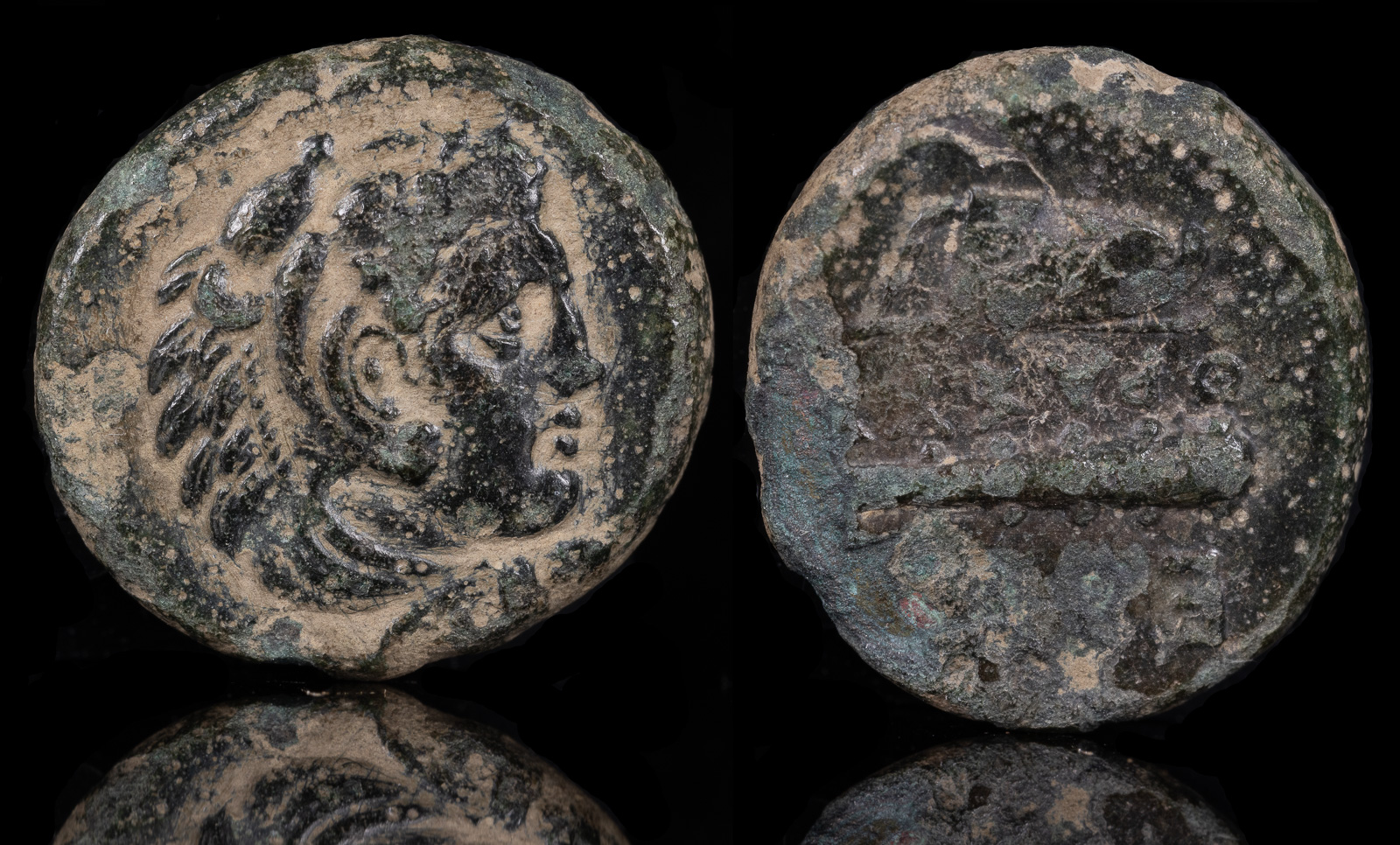
c. 4th century BCE
Æ 13mm, 1.82g, 3h
Thrasy-, magistrate
Head of Herakles r., wearing lion skin.
R/ Club and bow-in-bowcase.
SNG Copenhagen 598
Erythrai, which was located near modern day Izmir, was an important city named as one of the twelve important cities of Ionia along with Miletos, Myos, Priene, Ephesos, Kolophon, Lebedos, Teos, Klazomenai, Phokaia, Samos, and Chios.
The city was supposedly founded by Erythros, son of Radamanthys and was occupied by Lydians, Carians, and Pamphylians. Later on, Kleopos son of Kodros brought men from every Ionian city to join them.
Pausanias marveled at the Herakleion of Erythrai, especially the wooden statue. Legend has it that Athene sailed on a raft from Tyre and then anchored between Chios, long the rival of Erythrai, and Erythrai. Both sides wanted the statue for their own city, but the task was resolved by an Erythraian fisherman who had gone blind, but saw in a dream that the women of the city had to cut their hair to form a rope, and that rope would pull the statue in.
Most of the women weren’t fond of this dream, but the Thracian slave women agreed to do this, and a rope was constructed that was visible in Pausanias’ day. Also after that feat, the fisherman’s eyes opened and he was able to see for the rest of his life.
Pausanias also mentions a shrine of Athene in the city with a huge wooden statue.
Interestingly, this coin does not depict Athene but Herakles. He was also worshipped in the city and per legend had defeated a worm that was infecting their grape vines. Evidently beating up a worm wasn’t worthy of one the Twelve Trials of Herakles, and wasn’t included in the list.